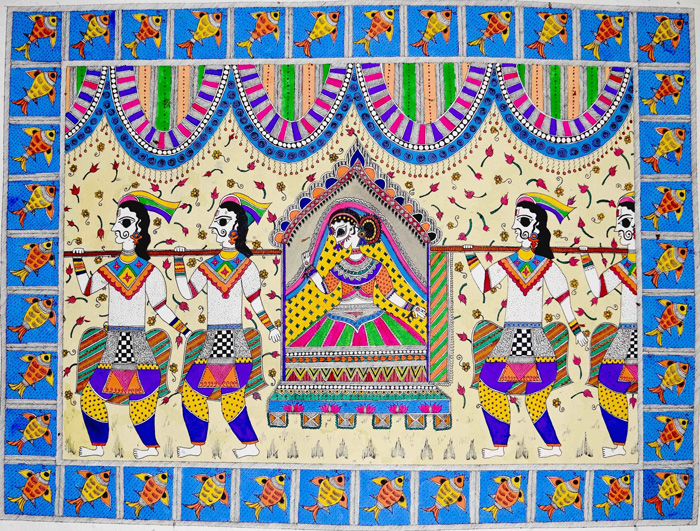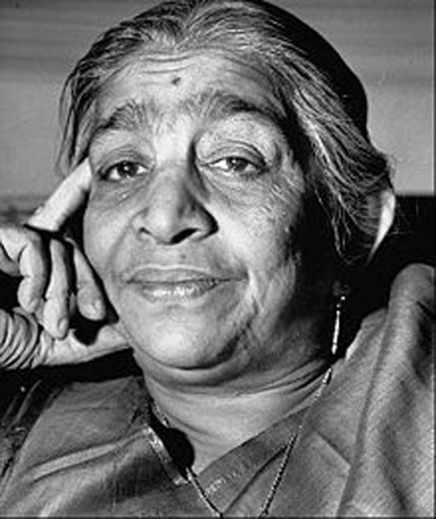Born in pre-independent India, Sarojini Naidu(13 February 1879 – 2 March 1949), was bound to be troubled by the problems of her time. She struggled to free India from the fists of the British Raj, but before that she battled the stereotypical notions of being a woman and thus, fragile and incapable, as beheld by Indians, to be considered able to fight for her own country and, more importantly, to be heard and taken seriously. Called the “Nightingale of India”, Sarojini Naidu is one of the most influential woman patriot, freedom fighter, and poet of modern India. Through her poetry, she generates determined emotions of love, patriotism, heroism. She calls on her nation to strive for freedom, each person there is, unitedly and not just a selective few who devote their lives for the liberation of the nation.
“To India” – Summary and Analysis by Sarojini Naidu
The poem, “To India”, was obviously penned by Sarojini Naidu. It is divided into four stanzas. Each stanza entertains precisely four lines. It is a poem consisting of only twelve lines. Though it may only be composed in a total of twelve lines, the impact of the poem far exceeds its length. In her poem, she deliberately designs India, to be personified as the Mother whom the poet invokes and pleads, for her to wake from her slumber. In the first stanza of the poem, Naidu calls on Mother India to rise, who is still young, even though she has existed since eternity – “O Young, through all thy immemorial years/Rise”. To the poet, the nation is in a deep slumber but she has to rise, rise from all the atrocities that she has faced, from all the “gloom” she underwent, while suffering inaction. The poet cannot bear the present state of her dear nation, she cannot fathom to believe that her glorious nation, even in her ruins, is sleeping and not revolting, nor regenerating her lost self but sleeping, in acceptance of the devastated condition of her mutilated self. By “spheres”, the poet could mean other powerful countries, with whom she would want India to ally, for her to win the fight for Independence. Thus, as a result of the mating of two countries, the poet wishes to beget “new glories” from the womb of the “bride”, for it is ageless and still, fertile.
The second stanza beholds the horror of the nation. By “nations” the poet could mean other colonized countries, or she could also mean the States of the country, that is, India. Since each State upholds a different language and even culture, they are together listed in the poet’s mind as “nations”, provoked by their existing diversity. It could also be possible that by “nations”, the poet implies the different people of the country, belonging to different cultures or having different perspectives. Thus the calling of the collective as the “nations” and not a nation. By “great mornings break”, the poet implies, victory and glory that is to be achieved. Since after a night of misery, comes the morning, bearing with it, the hope for a better tomorrow and the hope for glory just as in the glorious past, Mother India was so supreme that it lost to no one, instead, others yielded to her, willingly. Again, to cheer herself and the Mother out of their pitiful state, we see that in this poem, the poet tries to tell us that after darkness, there will come light. So, their scenario will alter, they will not remain misers forever.
Thus, she says that “The nations” are tired of all that they are enduring and like a beggar craves for food, they are craving for Mother India to rescue them from “fettered darkness”, which has stripped them of joy and left them weeping, to help them achieve the freedom that they rightly deserve. The poet demands the Mother to answer for the cause of her silence. The poet demands an answer, for what reason is she still asleep, given the situation the country is in. She cannot fathom to believe that despite all that has happened to the nation and its people, how are her people still quiet and unresponsive. Naidu pursues the Mother to rise from her sleeping state to rescue her future and to answer the poet for her “children’s sake”. The poet includes the children the poem to draw the undivided attention of the country, since the poet wasn’t being taken seriously and thus like a parent though unbothered about other things, is excessively careful and participating in nature when it comes to preventing her children from any harm. Now, her children’s lives are driven by her actions and her inaction is, but, contributing to her children’s destruction. And, hoping that this will cause the nation to stir, but at last, and move the unmoveable “slumbering” Mother, the poets do not end the poem but simply falls silent to observe the inaction of the nation change and thereby, ultimately, to victory.
As the poet slips into the last stanza, she shifts from calling the Mother nation herself, to claiming that the country’s “future” is calling her with innumerable and varied voices (“sound”), of the future progeny of children that she will bear in her “womb” and give birth. By “Thy future” it could be suggested that the poet is claiming herself to be the future of the nation, or it could mean that the poet is writing on behalf of the future generations of Indians. She acting as their spokesperson. What will happen to them, the poet indirectly questions as well as tries to derive an answer. As “Thy future” is in anticipation of glory and not a failure, since, it is calling its Mother towards the visitation of “crescent honors, splendors, victories vast”. Pleading for the “slumbering Mother” to rise from her ever damaging sleep, so that she can recover her past glory and be crowned again, negating the crown that was dominating her. The poet ardently wishes for the Mother to awake and to reclaim her throne, her crown and be hailed as free, like she was once – “ Empress of the sovereign/ Past”. Here “Past” could stand for golden India when it was the most advanced of nations, or “Past” could also be connoted as the immediate past of Mother India, that is, just before the golden bird (the country) was caged down.
Composed of four stanzas, with a total of twelve lines, each stanza has a fixed rhyme scheme or pattern. And the pattern is ABAB. Having addressed the poem to the “slumbering Mother”, the poet, indirectly, attempts to address it to the people of the nation, as she calls on them to not sit silently in their homes and abide by the torturous rules of the British empire, but to get out of their homes and join hands with each other to strive towards the common goal of ridding the nation of the torments of its oppressor. As the ones who chose to remain silent and inactive, are the ones who are sleeping and needs to be awakened by others, who are fighting for the nation, like the poet, herself, so that the nation can be restored to its former glory and be returned its pride and valor and strength. And for that to happen, Mother India does not just need to heel her wounds, but to emerge as stronger than before so that none can even attempt or dare to attack her.
Simple in its construction, as well as in its final built, the poem deals with the then burning issues of the country for which she fights, that country which she calls her own, and every manner tries to protect her from all harms, also, making sure that Mother India fights for herself and if not for herself, at least for her children. Very successfully, Naidu uses the mother sentiment to her profit and succeeds. It also fits perfectly with the ideals of an Indian mother, who does not protest even if she is beaten and abused, but turns into a site of unimaginable wrath when anyone even thinks of attempting or attempts to hurt her children. It is the pain of her children, that she cannot bear, neglecting her own pain. Sarojini Naidu appeals to that weak spot of the Mother to provoke her to rescue and, ultimately restore the former glory of such a beauteous nation. Reading her poem, one cannot help but capture the sentiments and their rawness, despite the fact that India is now a free nation. Are its inhabitants? Well… that is for us to decide. Hope you enjoyed going through the summary and analysis of “To India” by Sarojini Naidu.
Some online learning platforms provide certifications, while others are designed to simply grow your skills in your personal and professional life. Including Masterclass and Coursera, here are our recommendations for the best online learning platforms you can sign up for today.
The 7 Best Online Learning Platforms of 2022
- Best Overall: Coursera
- Best for Niche Topics: Udemy
- Best for Creative Fields: Skillshare
- Best for Celebrity Lessons: MasterClass
- Best for STEM: EdX
- Best for Career Building: Udacity
- Best for Data Learning: Pluralsight















